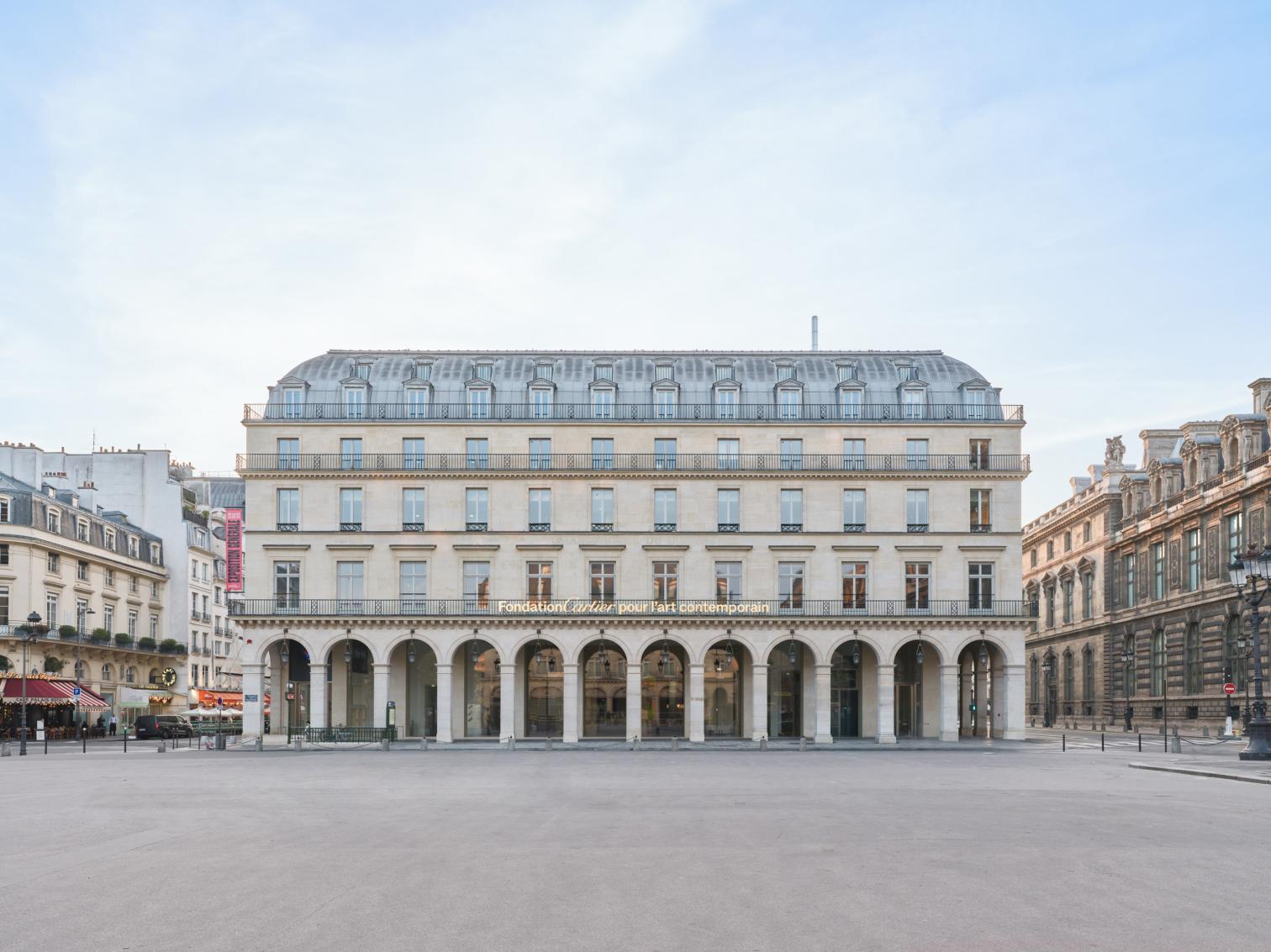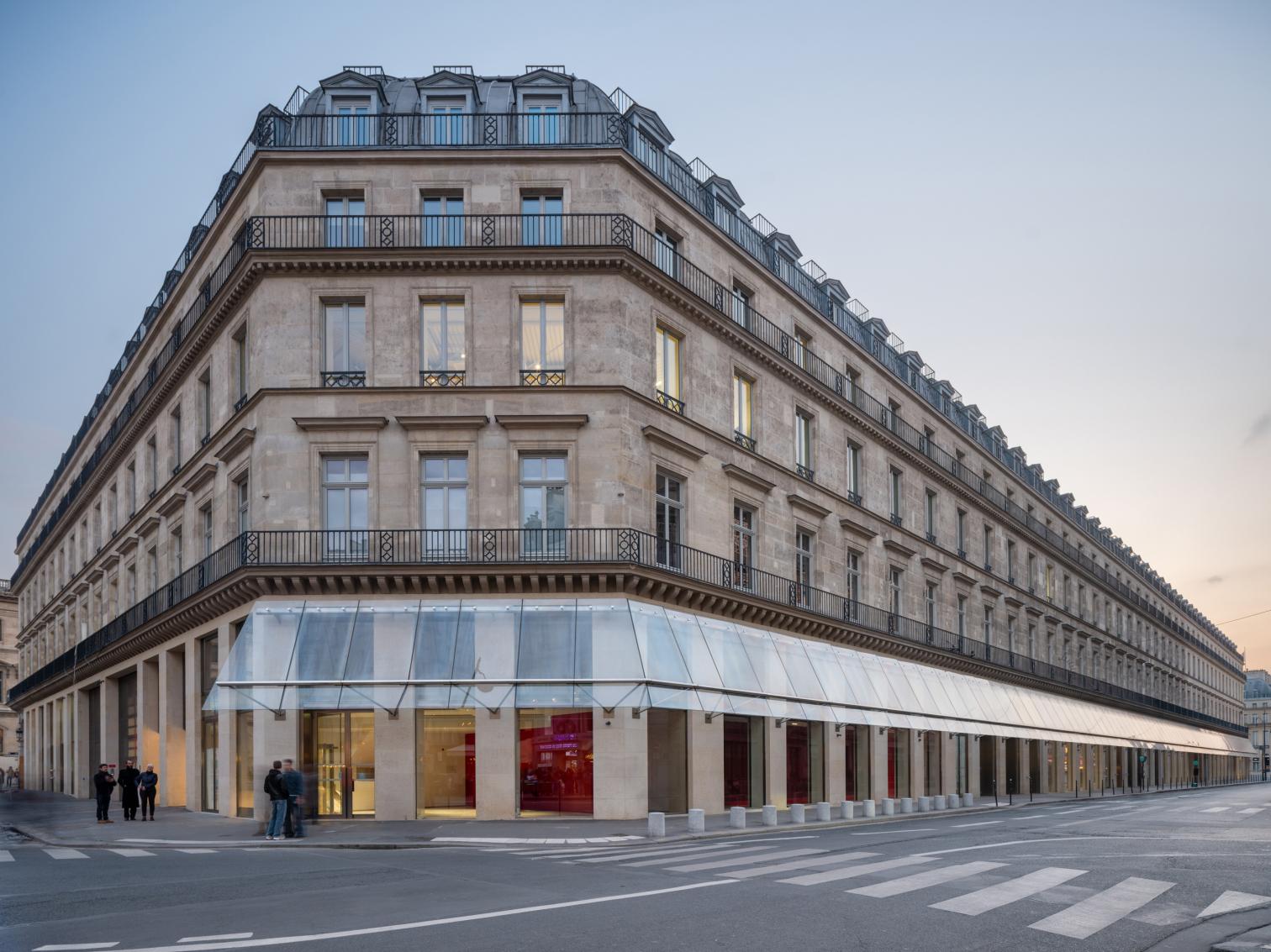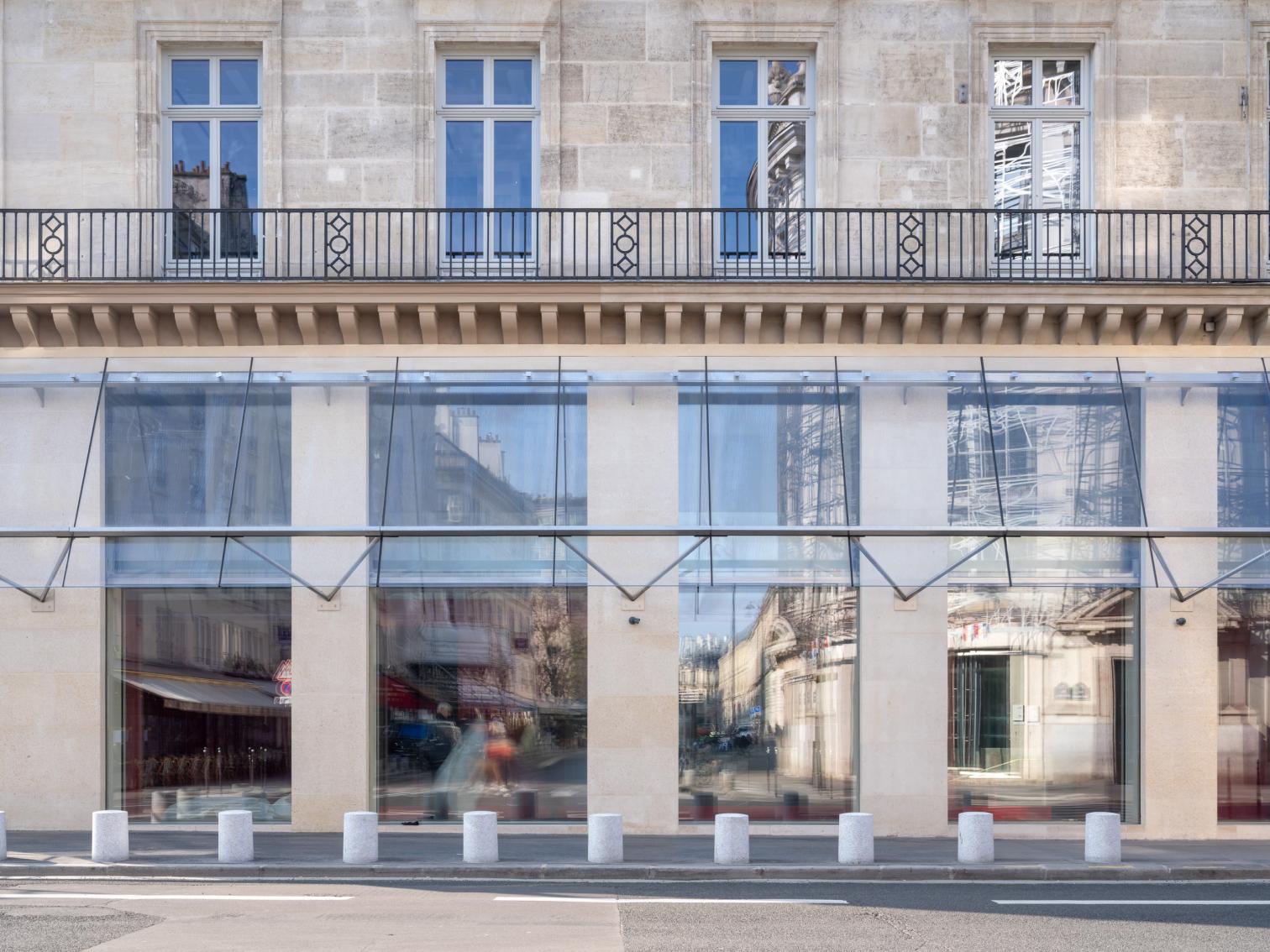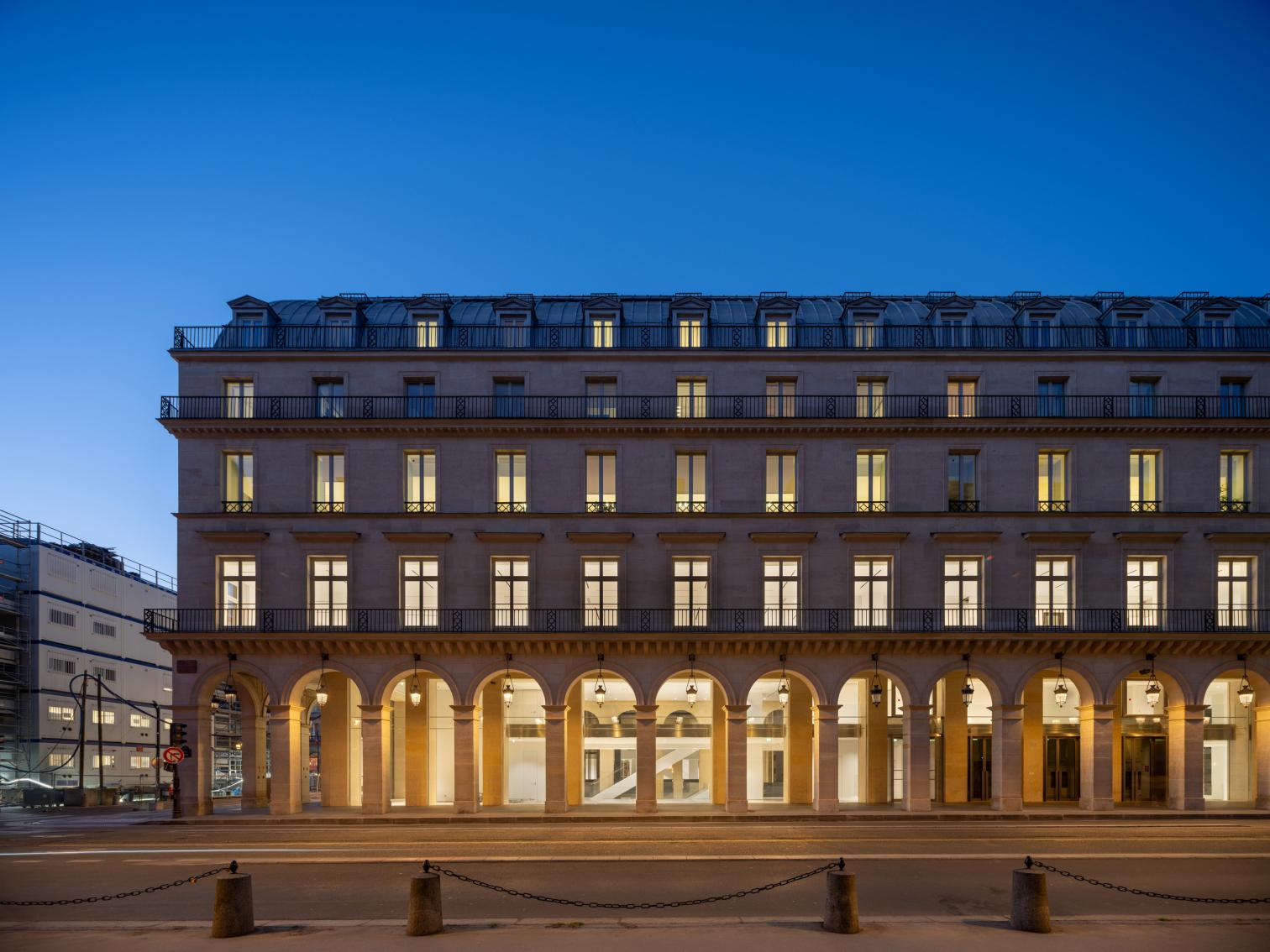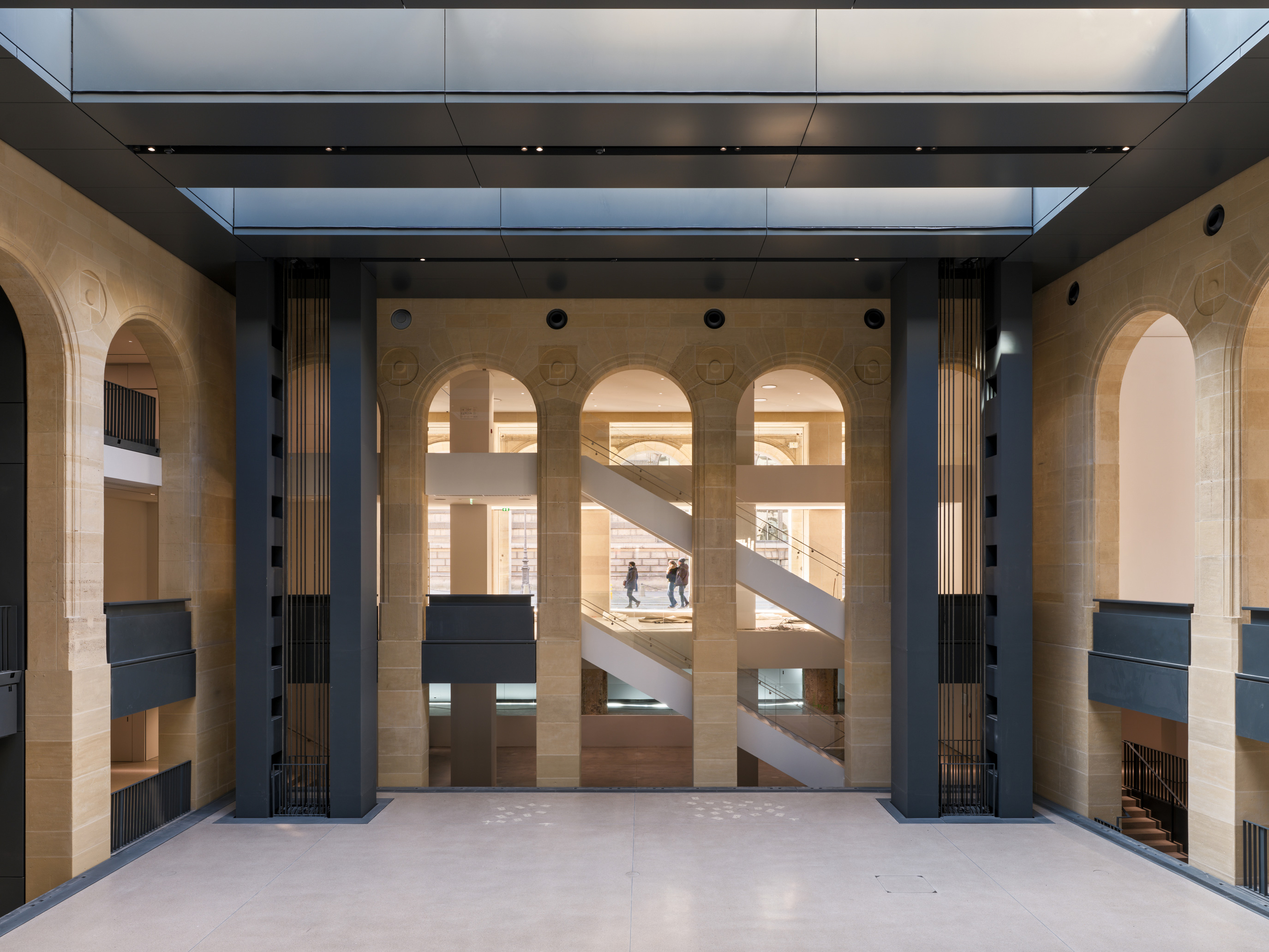New Fondation Cartier in Paris
Ateliers Jean Nouvel- Type Refurbishment Museum
- Date 2025
- City Paris
- Country France
- Photograph Martin Argyroglo

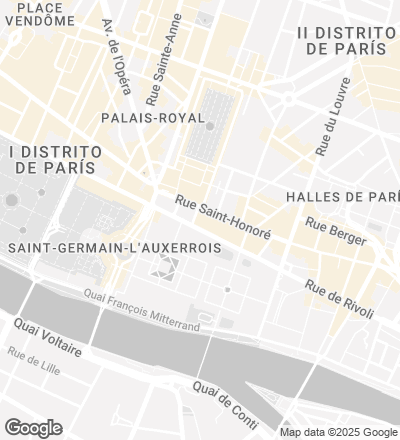
On 25 October 2025, the Fondation Cartier pour l’art contemporain begins a new chapter with the public opening of its new location at 2 Place du Palais-Royal, in the heart of Paris, across the Musée du Louvre. The inside of the historic Haussmann-stye edifice, competed in 1855, has been fully transformed by Ateliers Jean Nouvel.
Since 1984, the Foundation has promoted dialogue and artistic experimentation, focusing its institutional project on the connection between creation and exhibition. Its first site was in Jouy-en-Josas, and in 1994 it moved to Paris, into a glass-and-steel building on Boulevard Raspail, designed by Jean Nouvel in a way that prioritized transparency and spatial flexibility.
Nouvel has created a dynamic architecture structured around five monumental mobile platforms. They allow for multiple spatial configurations at different heights, generating modular combinations of volumes that expand curatorial possibilities. With more than 8,500 square meters accessible to the public – 6,500 of which are for exhibitions – the new building offers an new kind of museum experience. Along the facade on Rue Saint-Honoré, a 150-meter-long transparent marquee covers and protects a walkway.
The inaugural show, ‘Exposition Générale,’ takes its name from events held in the late 19th century at the Grands Magasins du Louvre, which were in the same building that now houses the Cartier Foundation. That venue was the scene of events devoted to modernity, bringing together objects and products from around the world with the aim of broadening cultural horizons and fostering new fields of knowledge. ‘Exposition Générale’ presents more than 600 works by over a hundred artists, among them Cai Guo-Qiang, Diller Scofidio + Renfro, Junya Ishigami, David Lynch, Patti Smith, and James Turrell.
With this new headquarters the Fondation Cartier reaffirms its commitment to artistic innovation by transforming a symbol of Parisian history into a living, changing organism at the service of contemporary art.
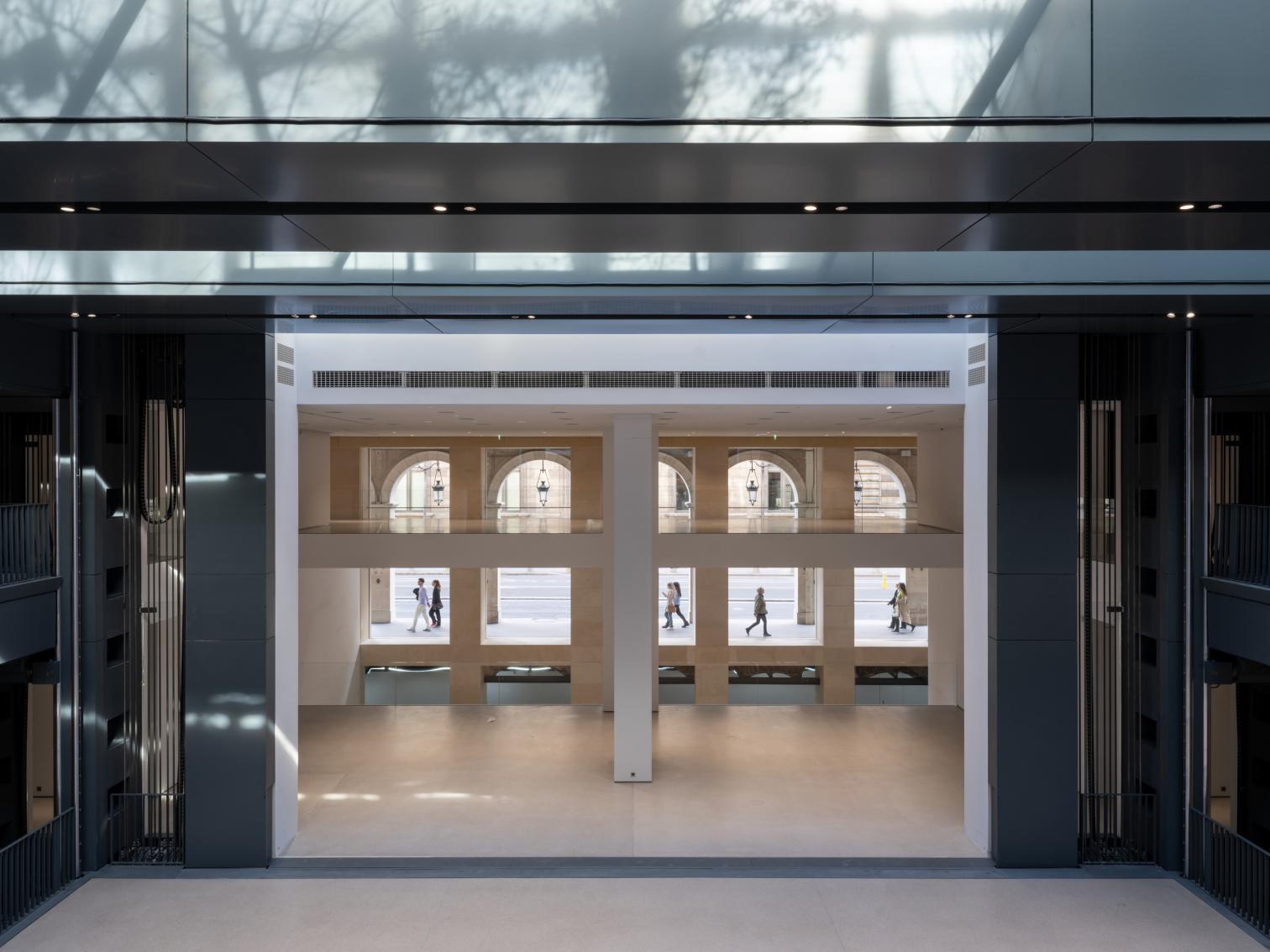
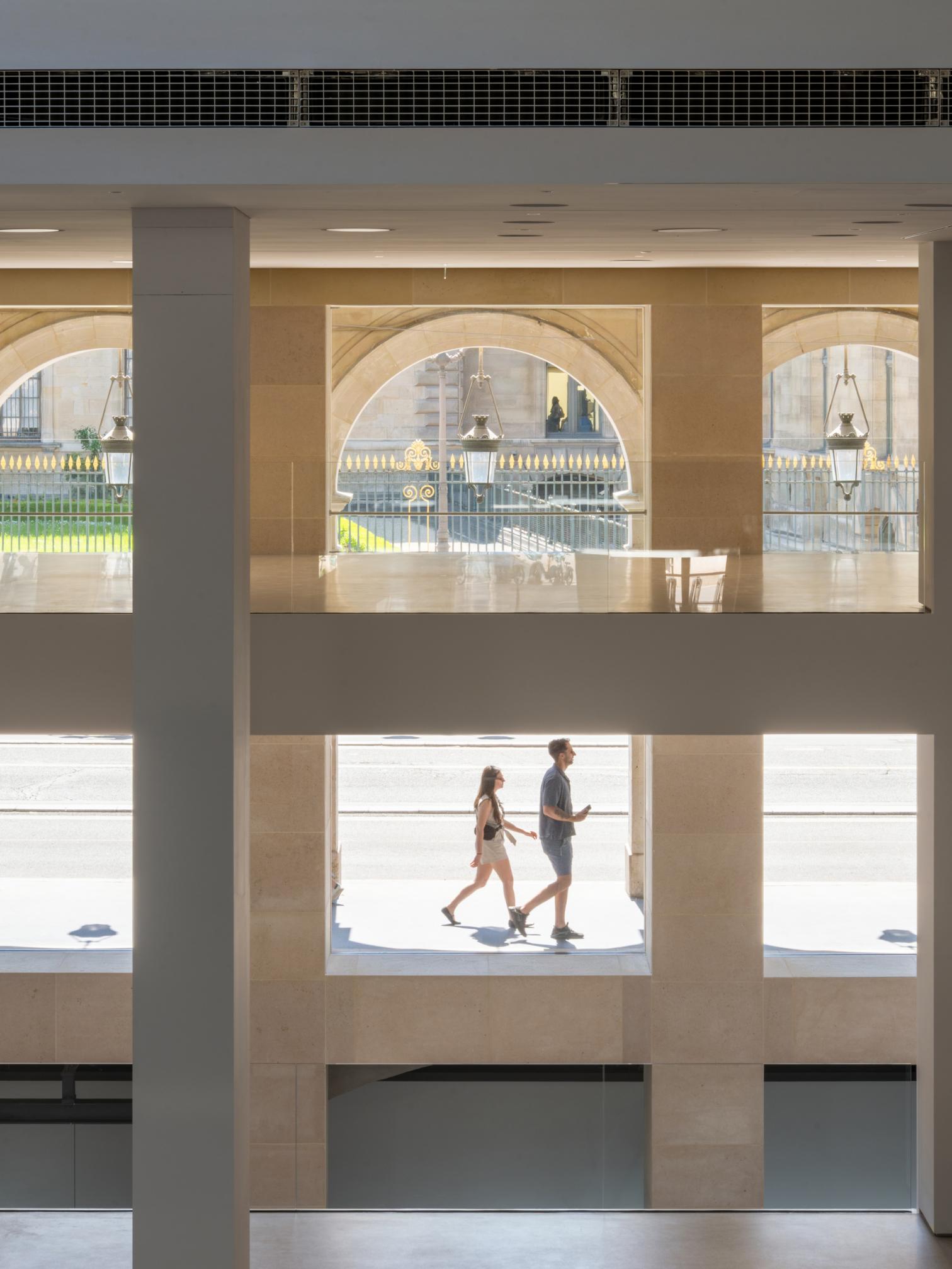
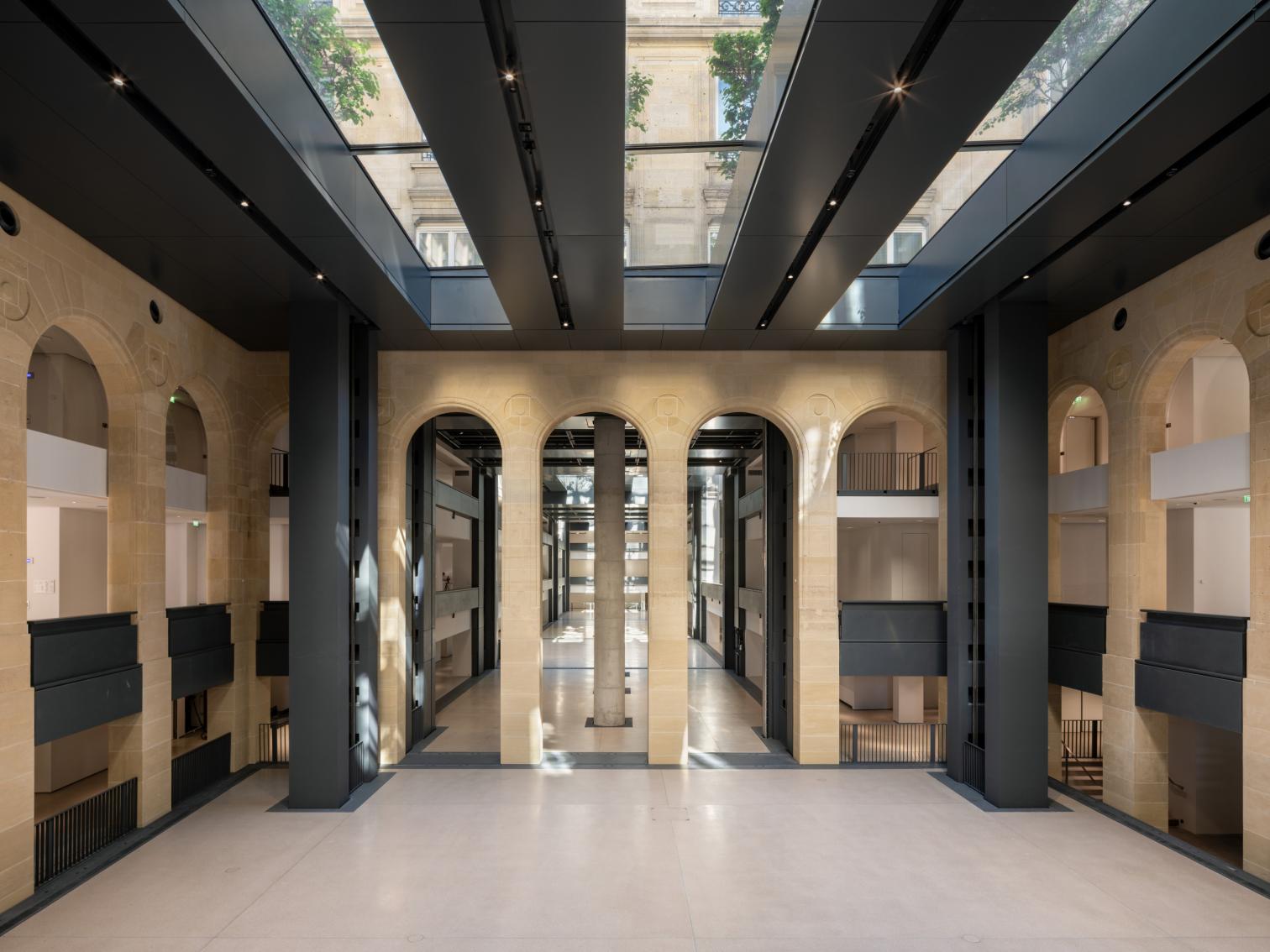
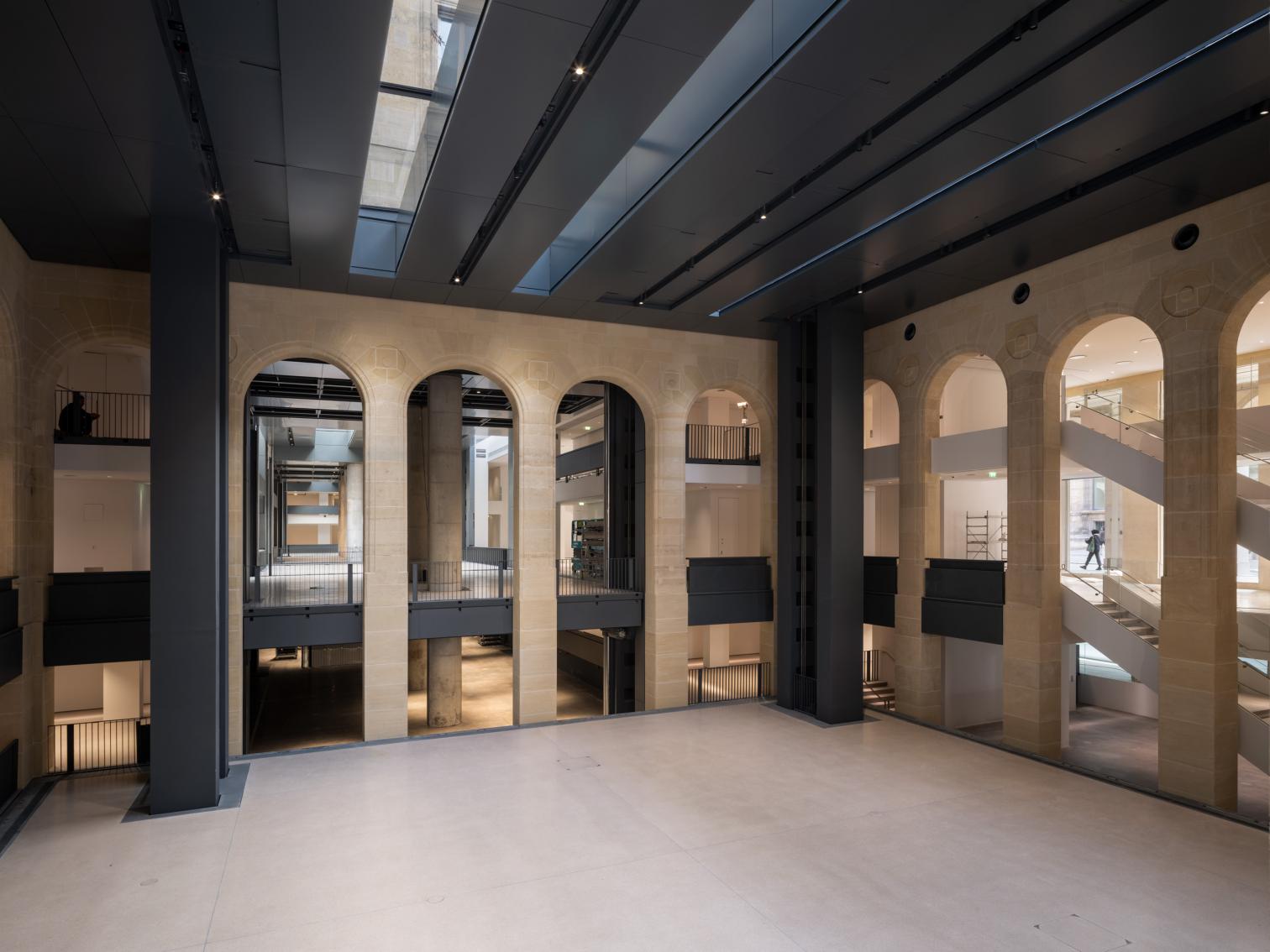
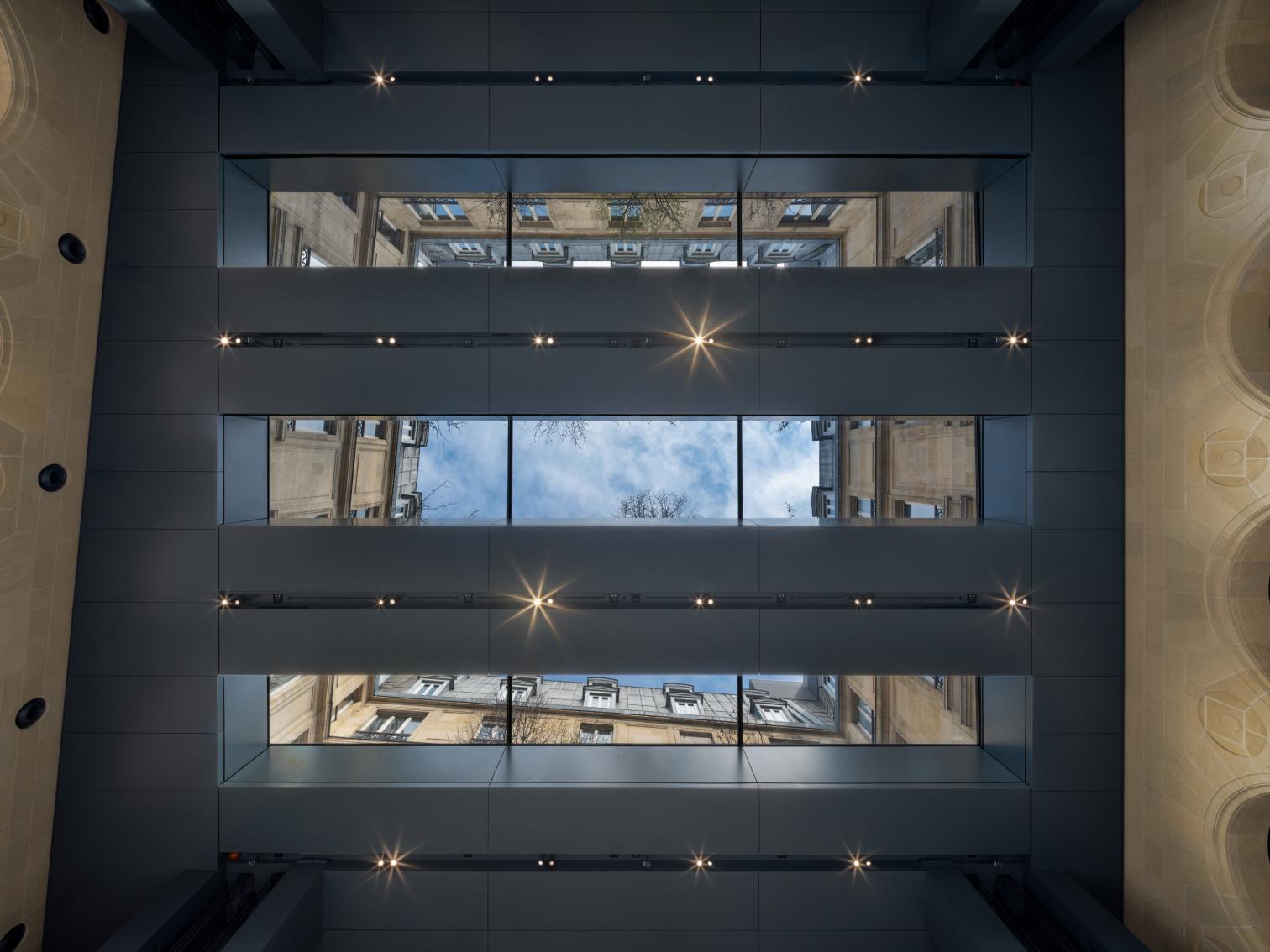
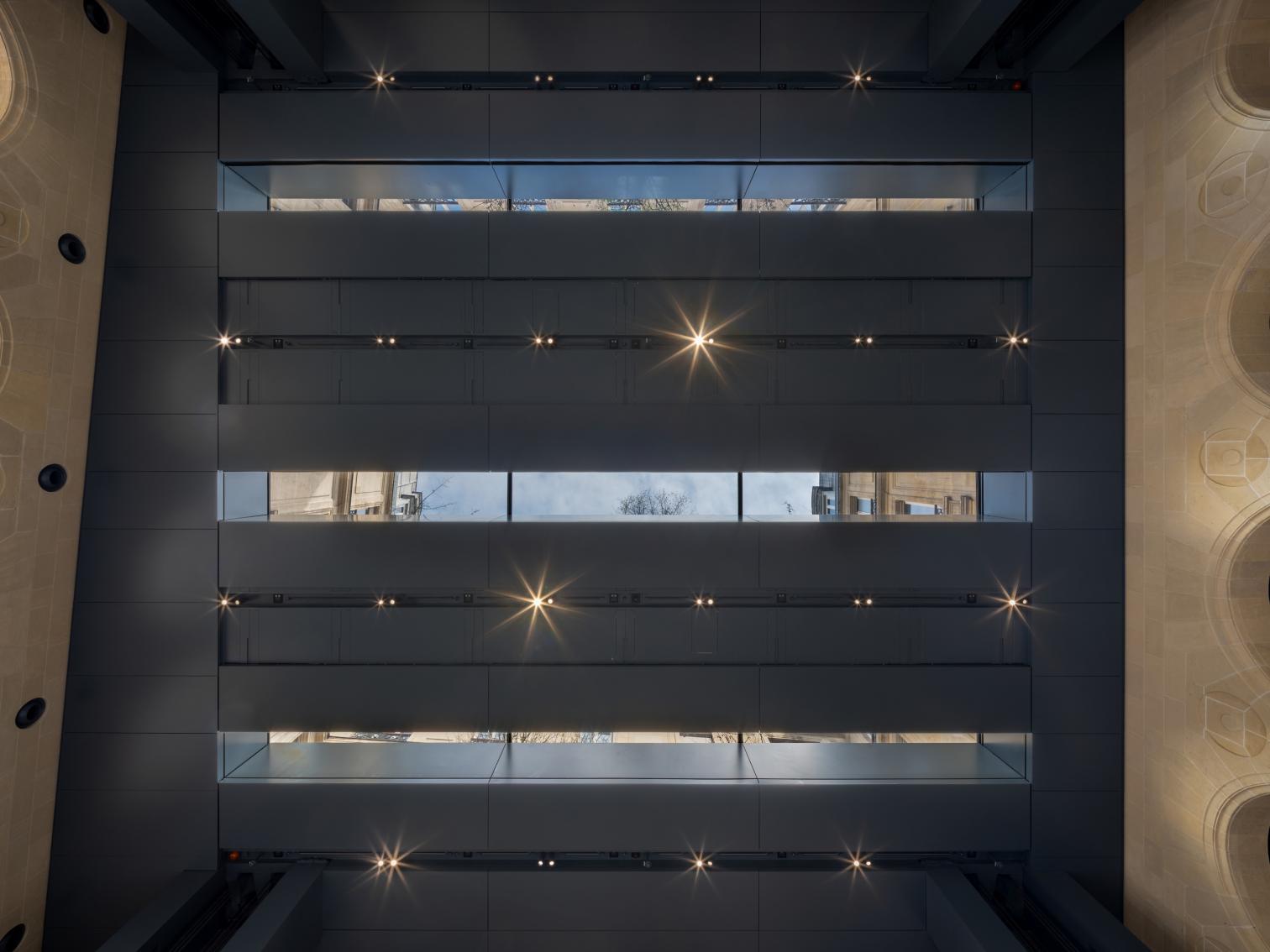
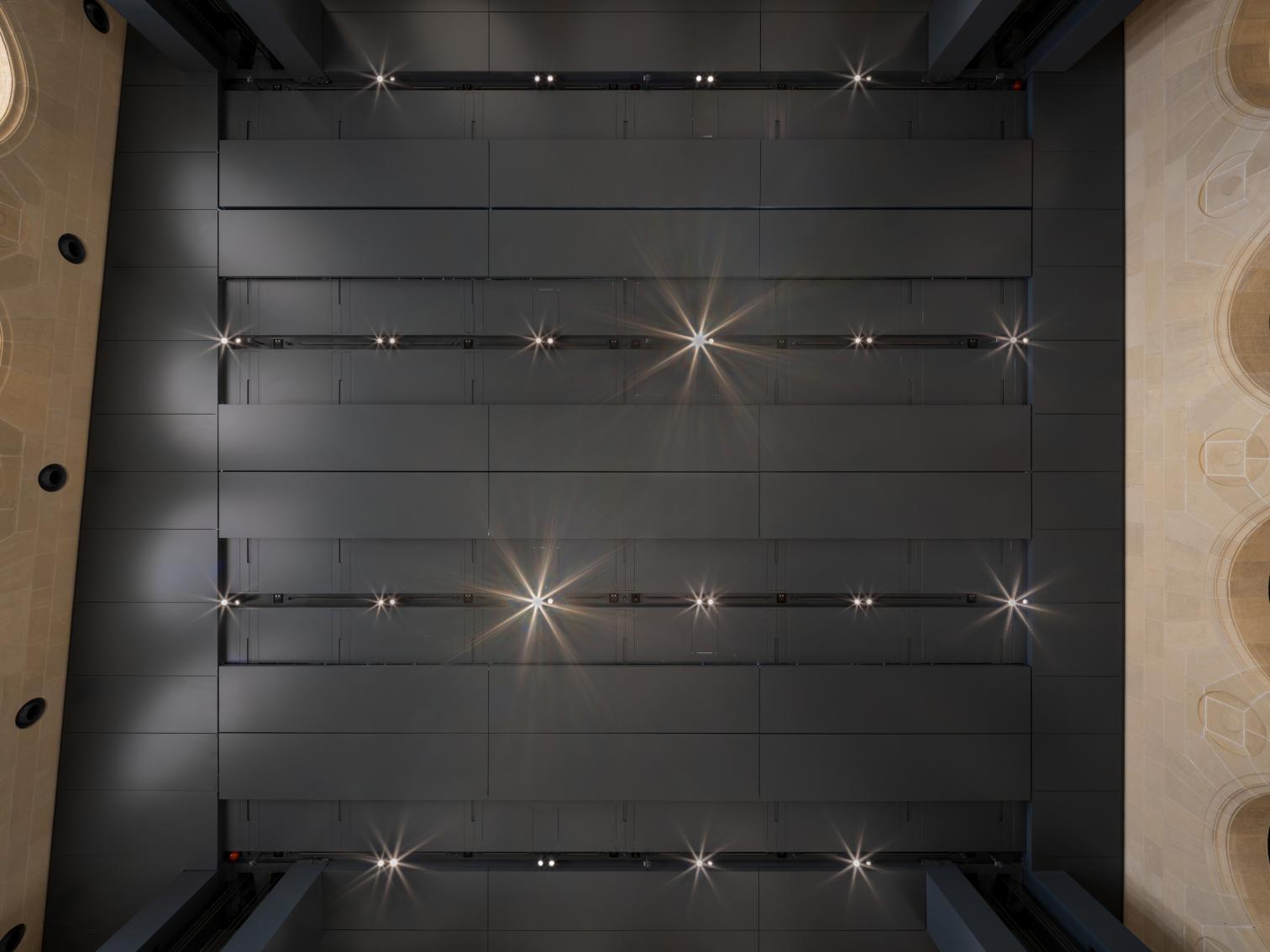
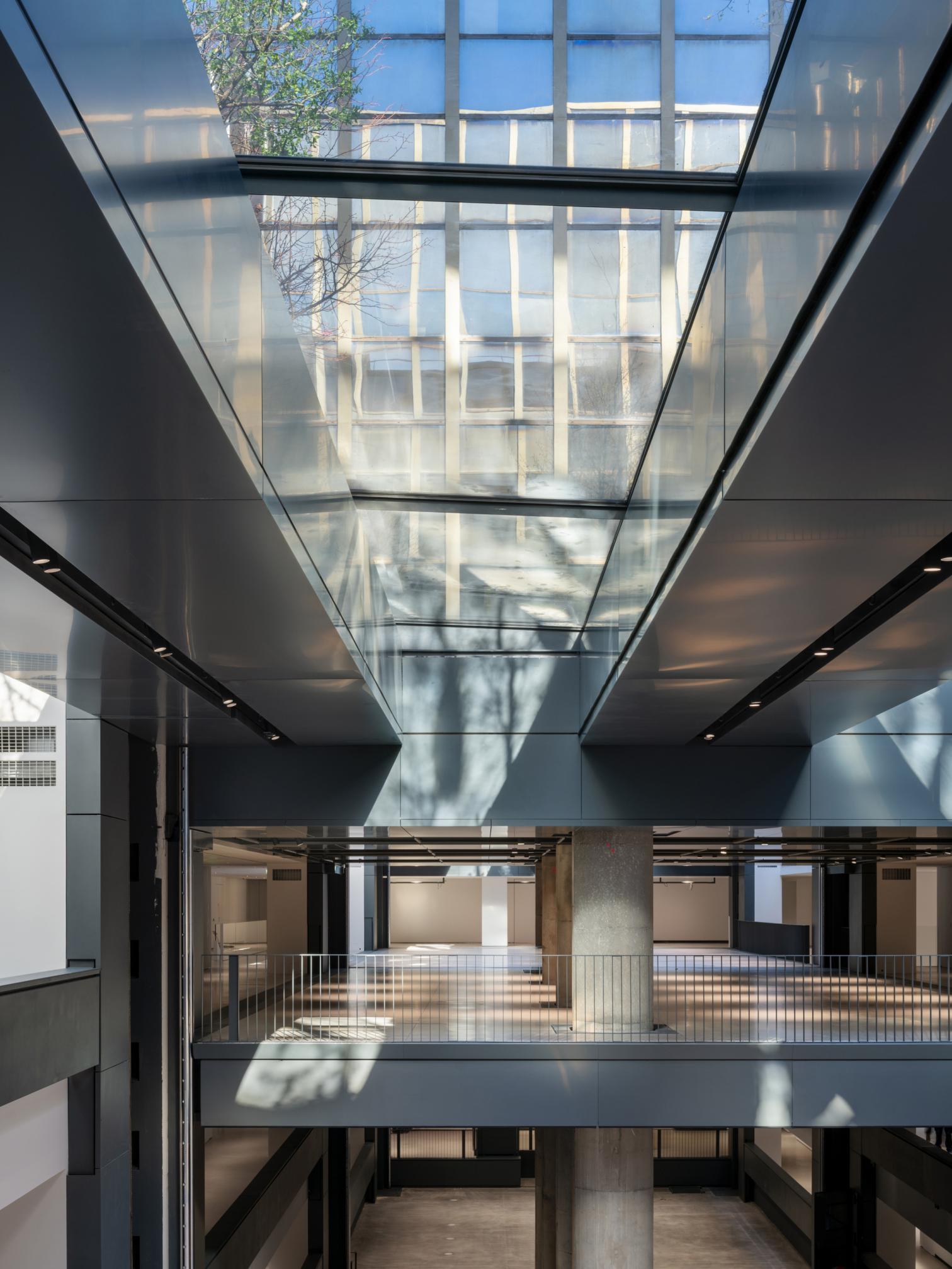
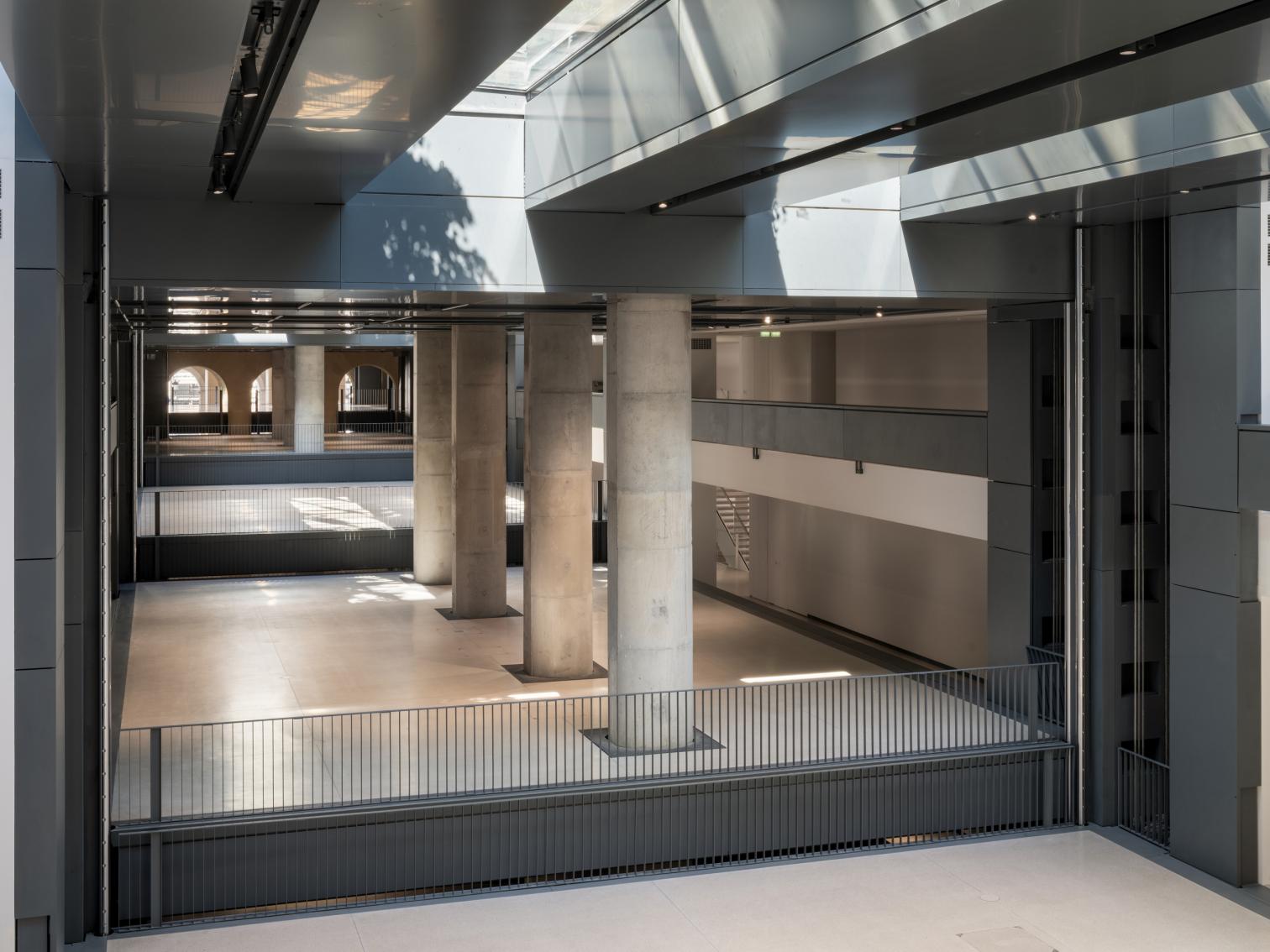
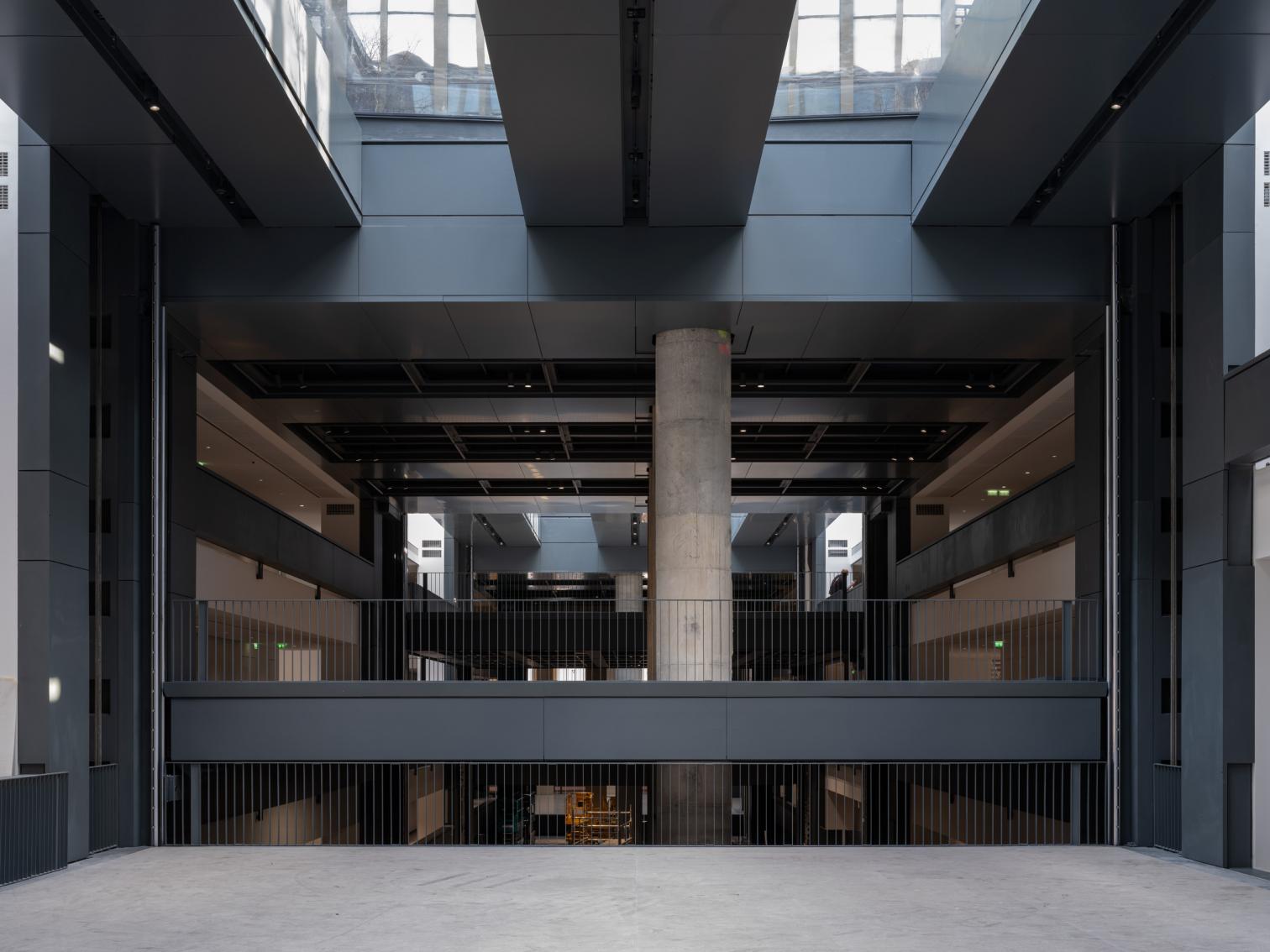
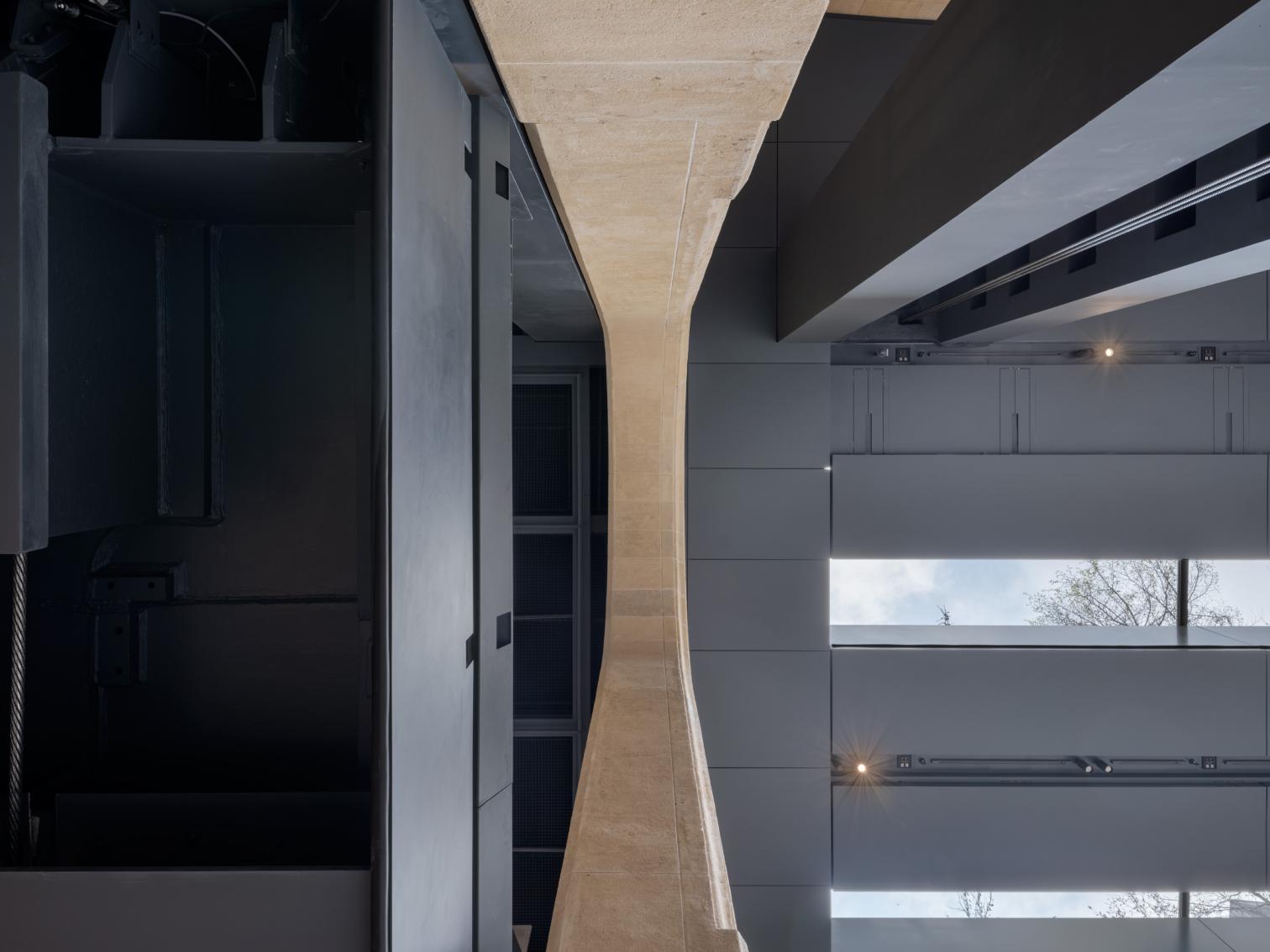
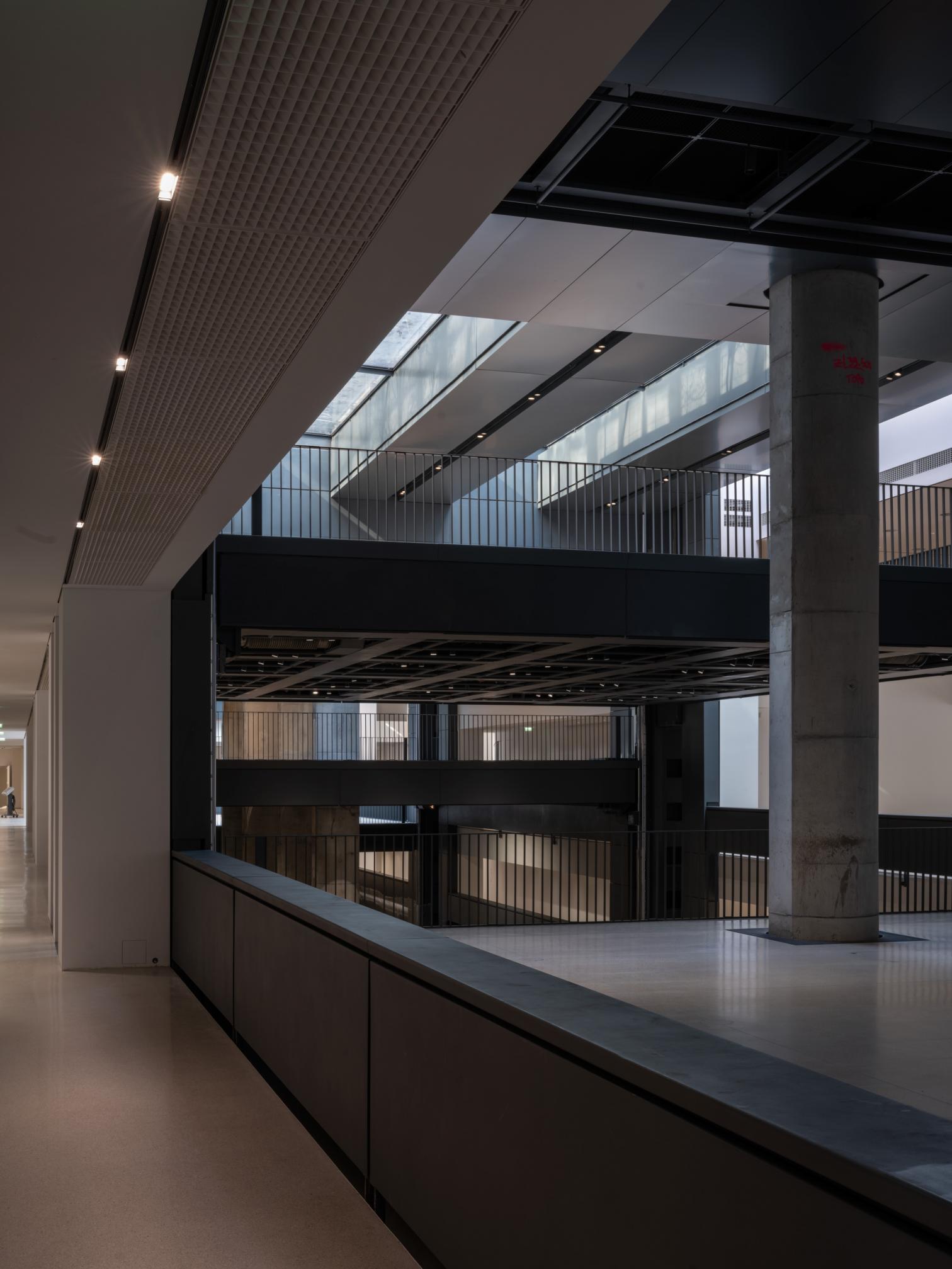
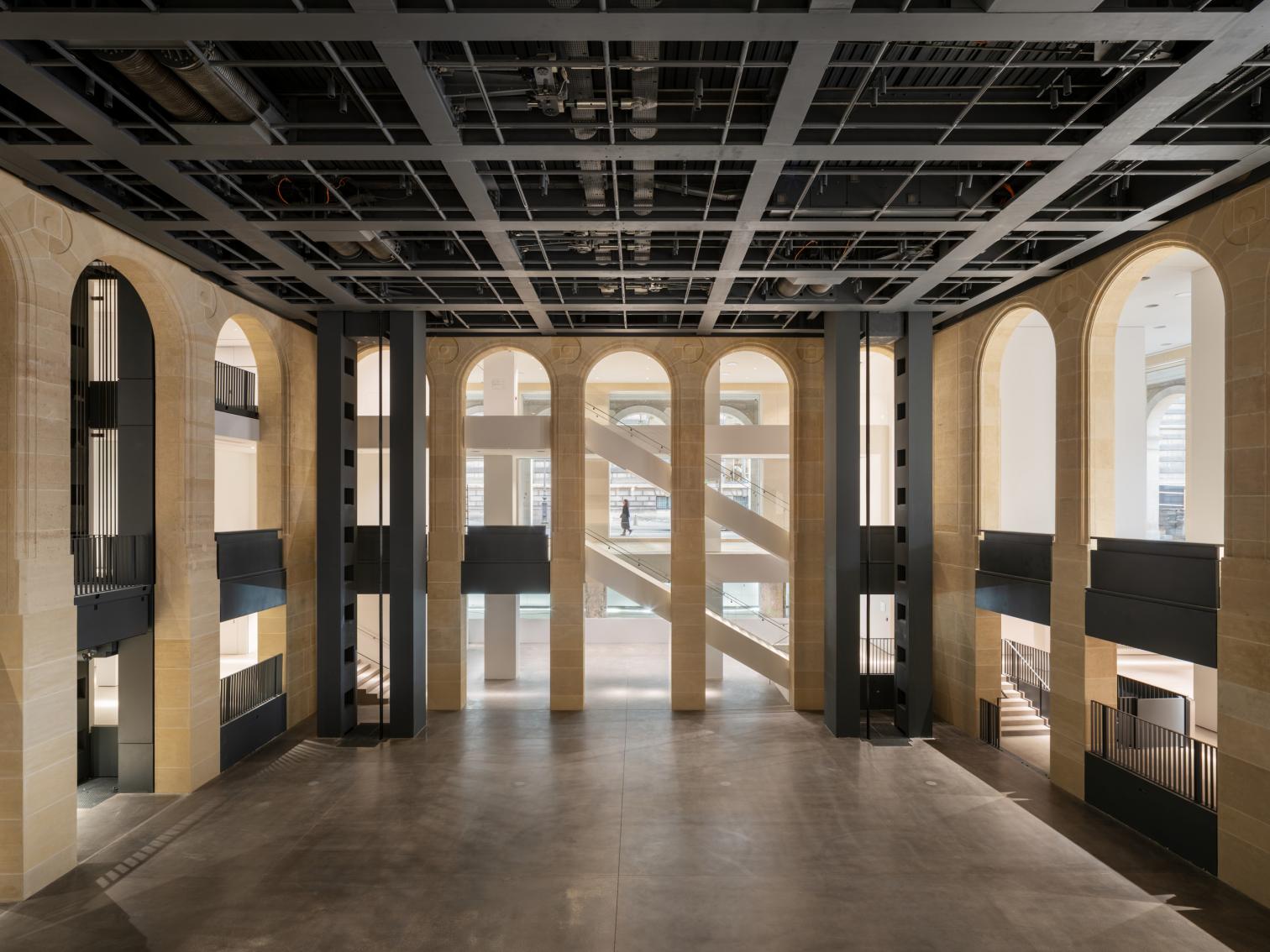
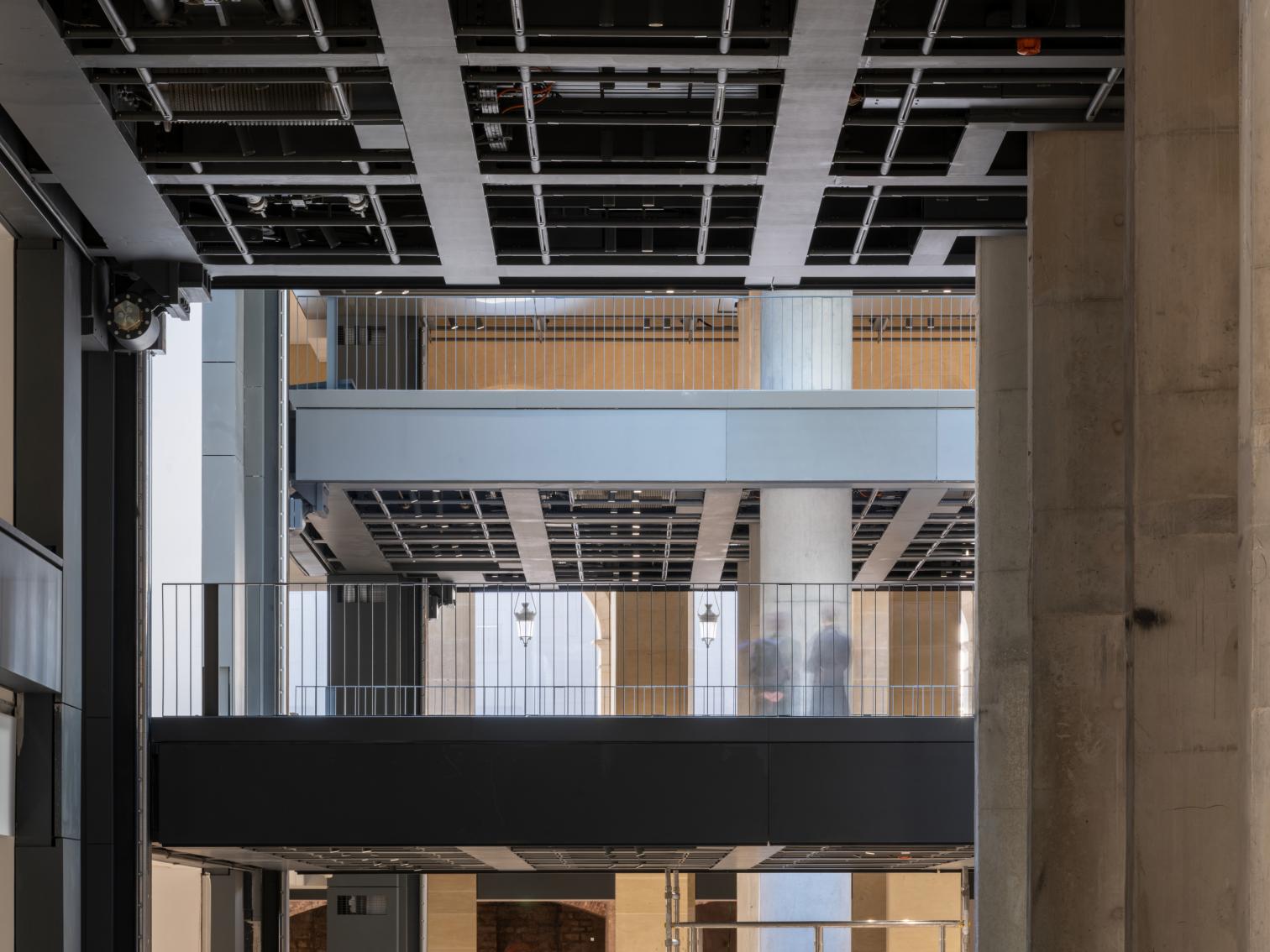
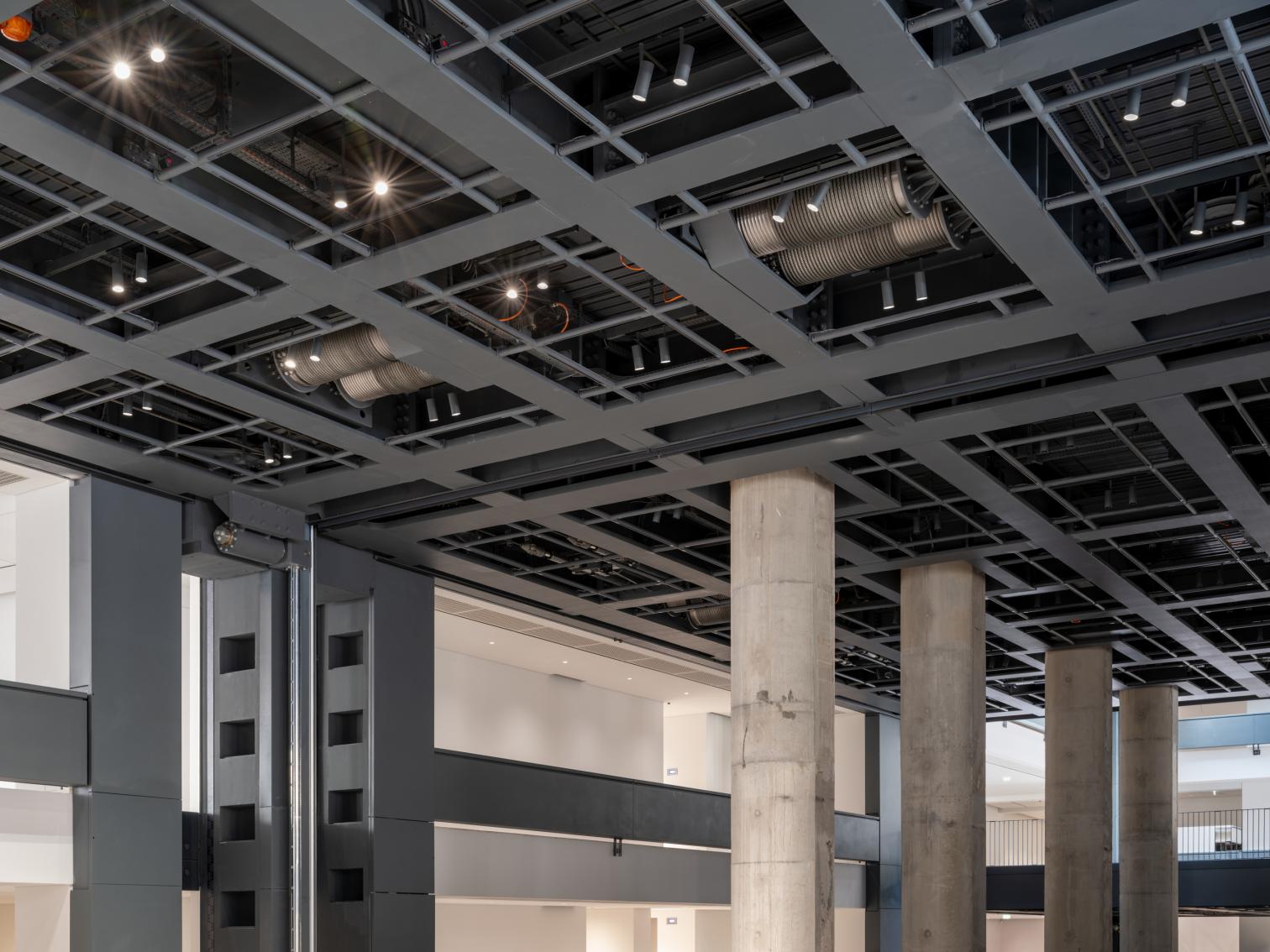
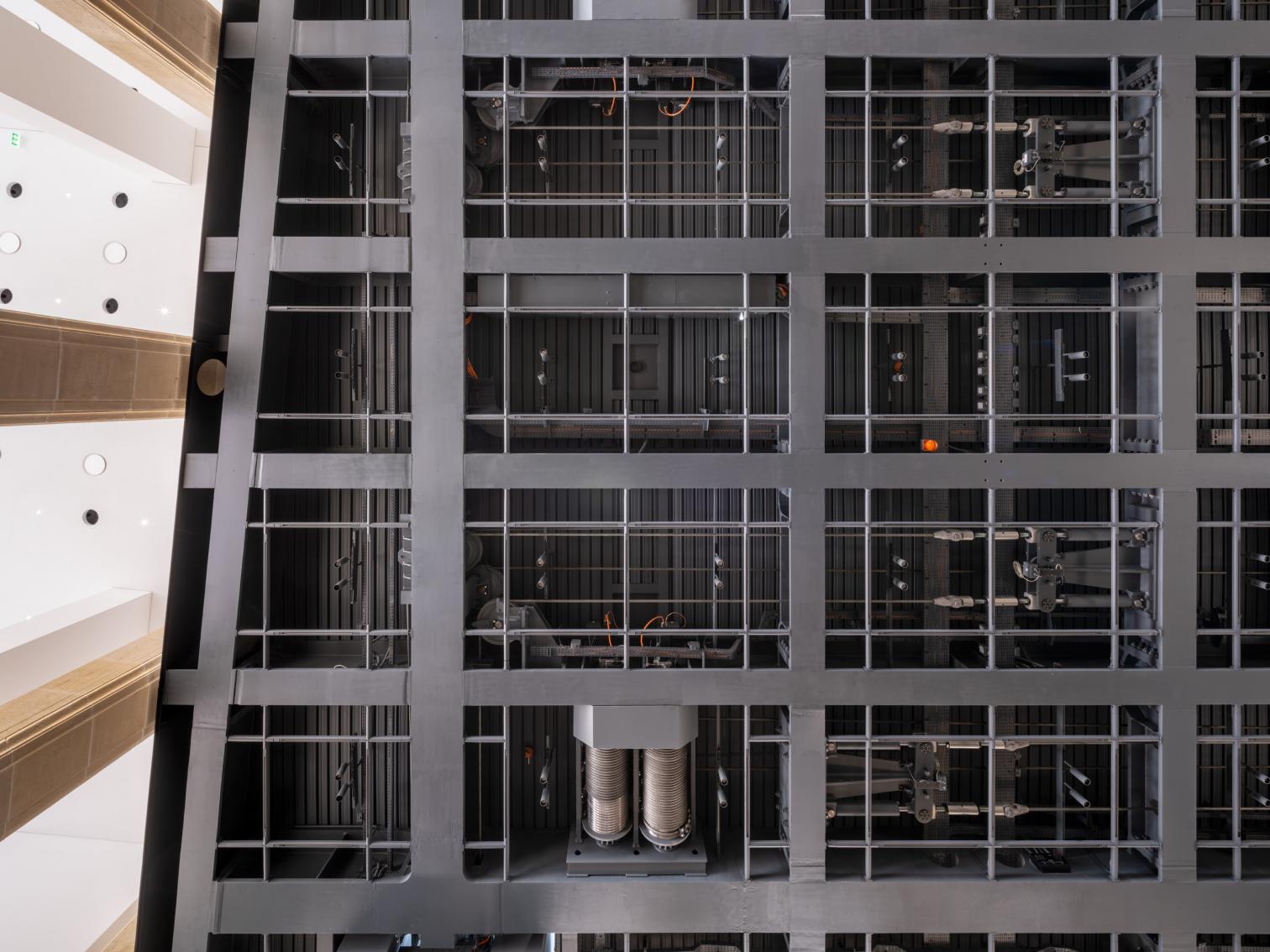
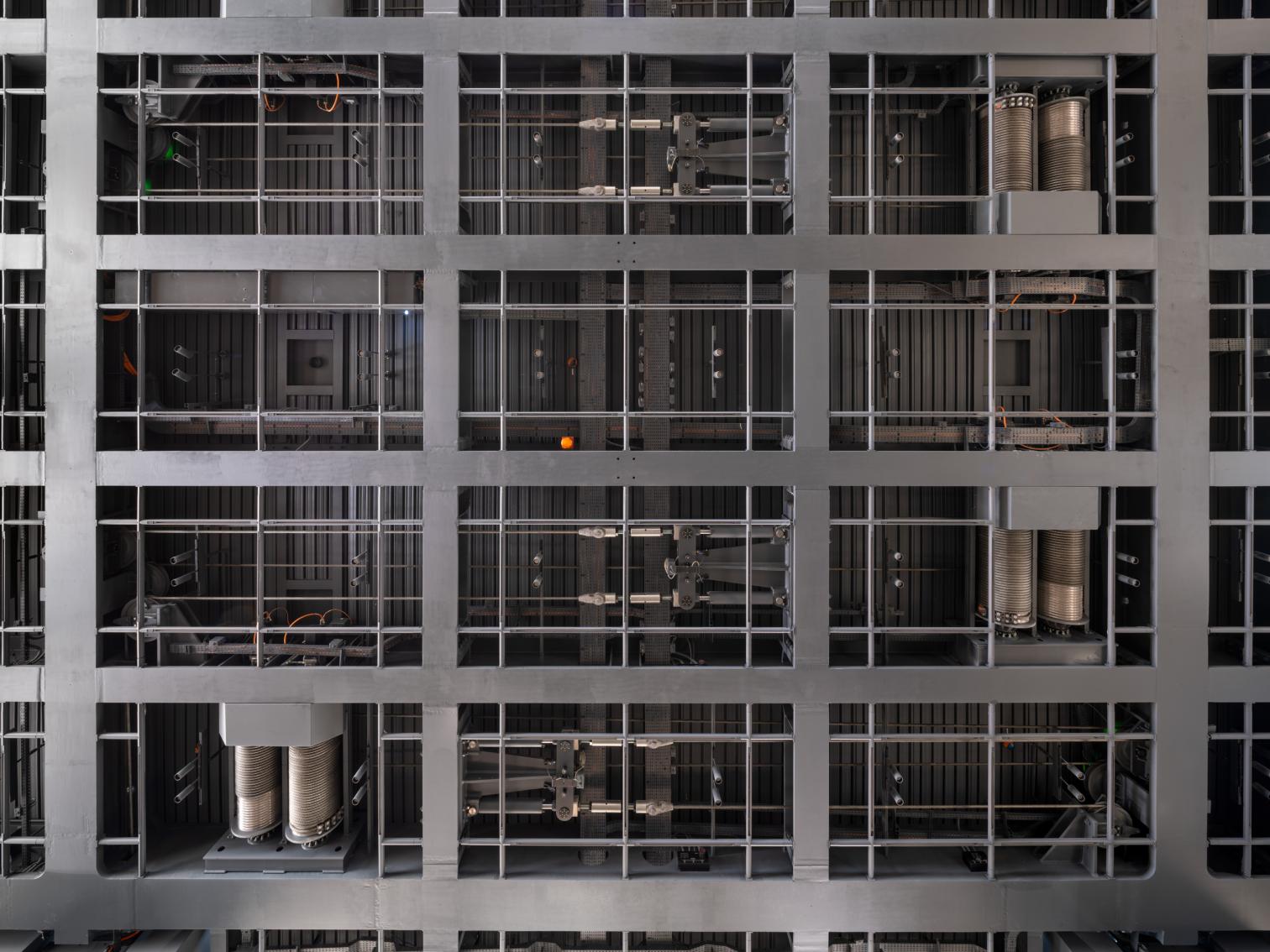
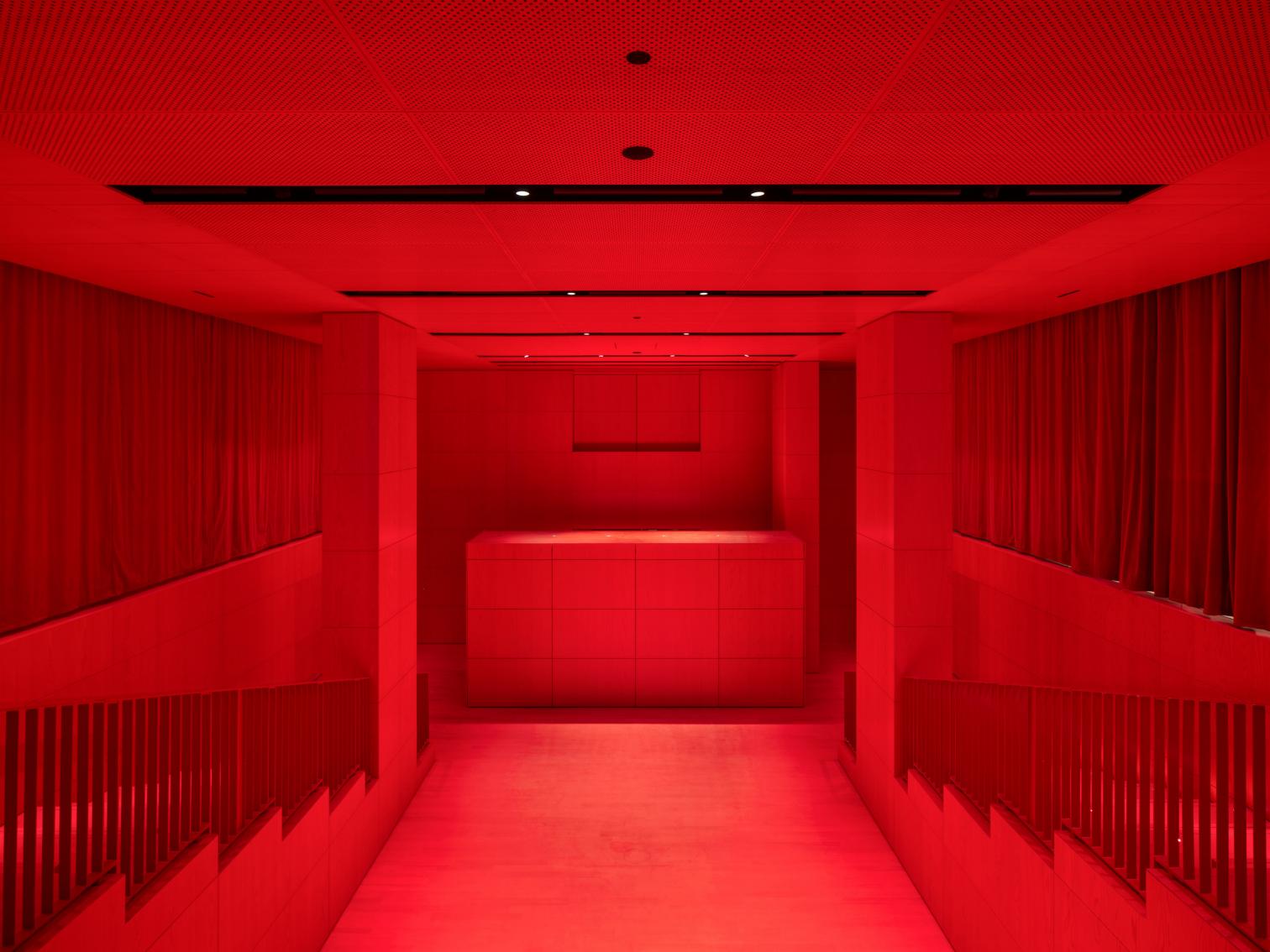
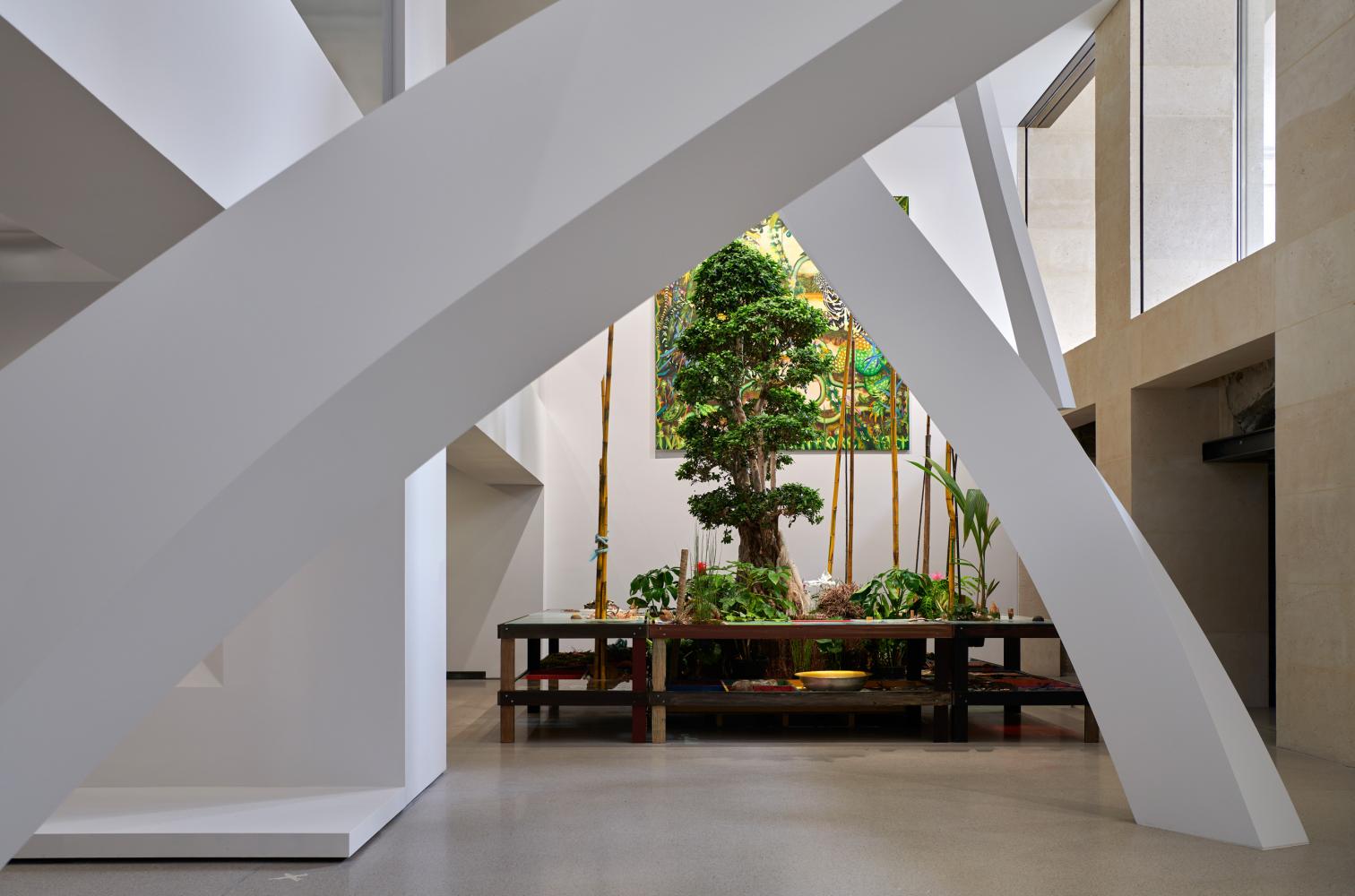
Junya Ishigami. Photo: Marc Domage
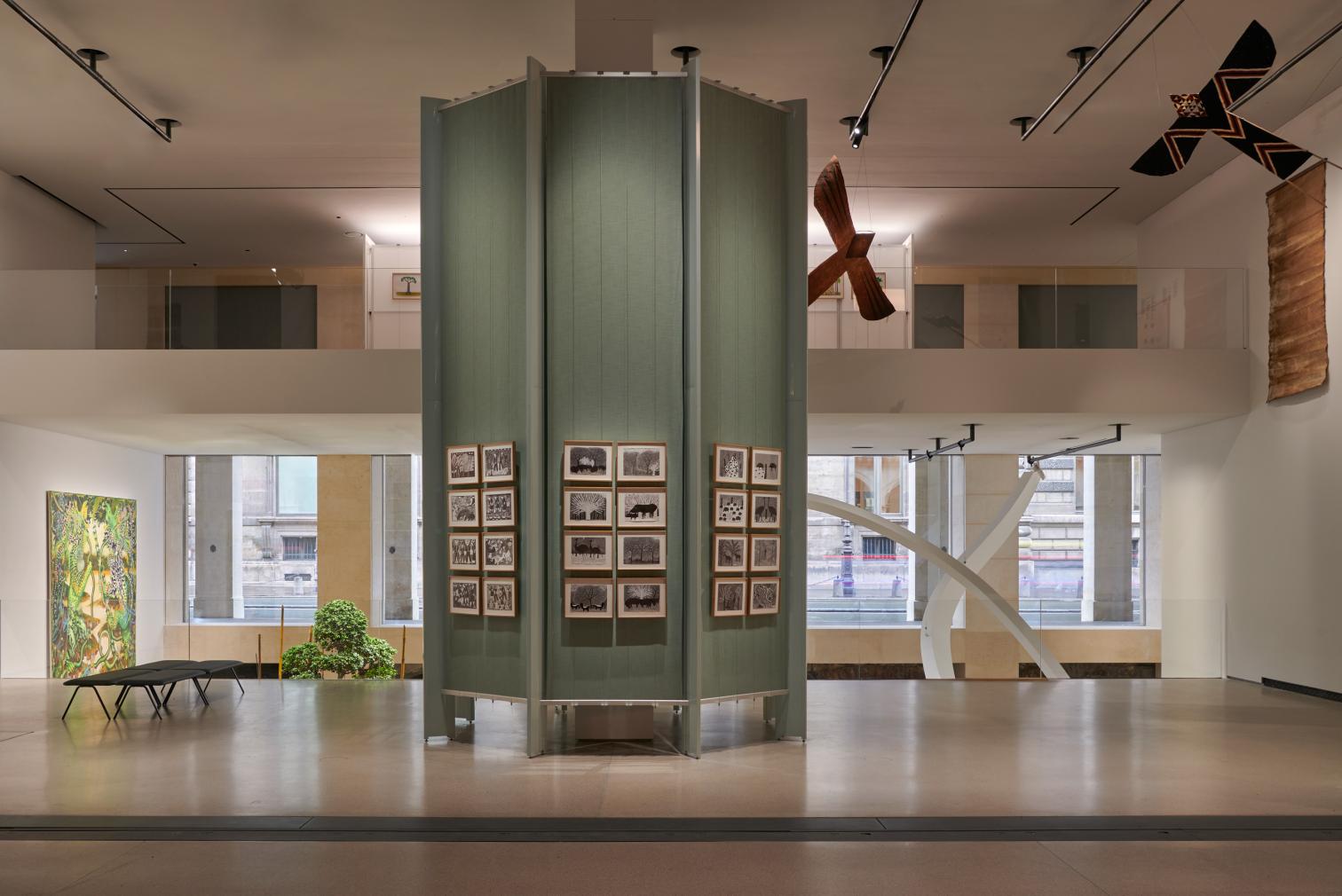
Photo: Marc Domage
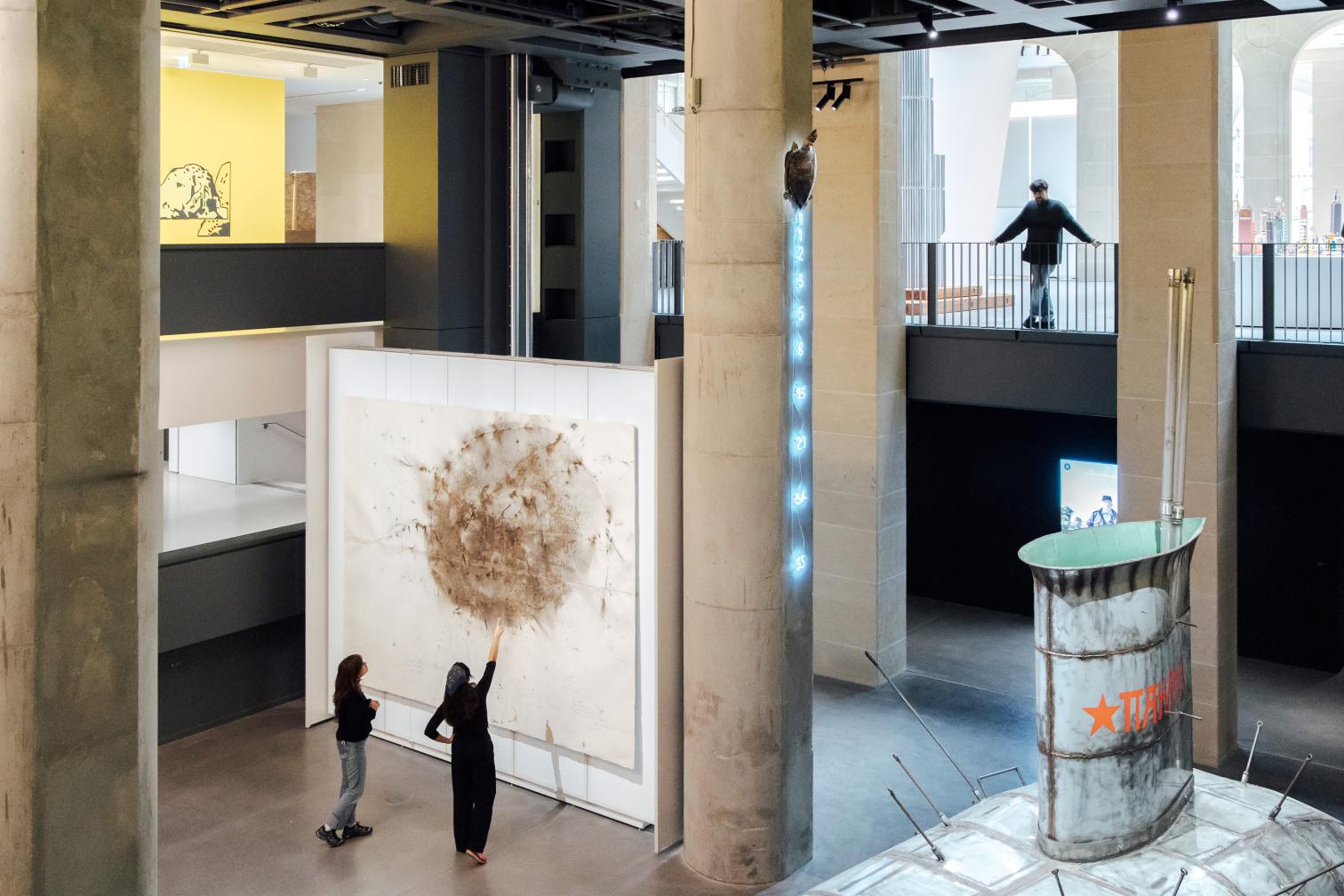
Foto: Cyril Marcilhacy
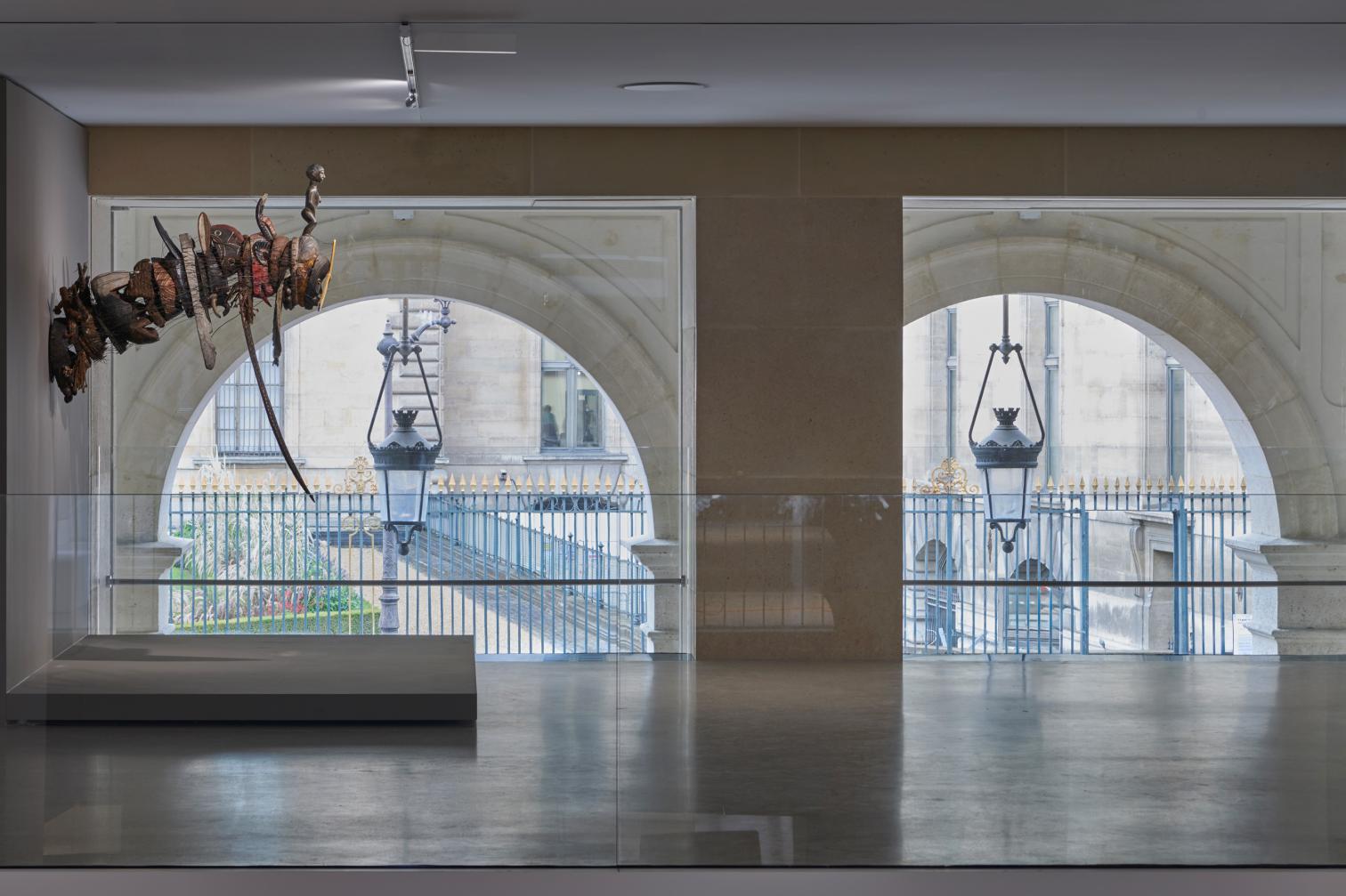
Photo: Marc Domage
